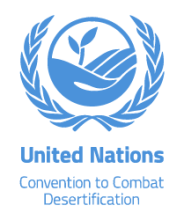Resource information
Seventy-five percent of the world’s poor live in rural areas and most are involved in agriculture. In the 21st century, agriculture remains fundamental to economic growth, poverty alleviation, and environmental sustainability. Increased global demand for land because of higher and more volatile food prices, urbanization, and use of land for environmental services implies an increased need for well-designed land policies at the country level to ensure security of long-held rights, to facilitate land access, and to deal with externalities. Establishing the infrastructure necessary to proactively deal with these challenges can require large amounts of resources. Yet with land tenure deeply rooted in any country's history, a wide continuum of land rights, and vast differences in the level of socioeconomic development, the benefits to be expected and the challenges faced will vary across and even within countries, implying a need to adapt the nature and sequencing of reforms to country circumstances. Also, as reforms will take time to bear fruit and may be opposed by vested interests, there is a need to identify challenges and to reach consensus on how to address them in a way that allows objective monitoring of progress over time. Without this being done, the chances of making quick progress in addressing key land policy challenges are likely to be much reduced. The Land Governance Assessment Framework (LGAF) is intended as a first step to help countries deal with these issues. It is a diagnostic tool that is to be implemented at the local level in a collaborative fashion, that addresses the need for guidance to diagnose and benchmark land governance, and that can help countries prioritize reforms and monitor progress over time.



